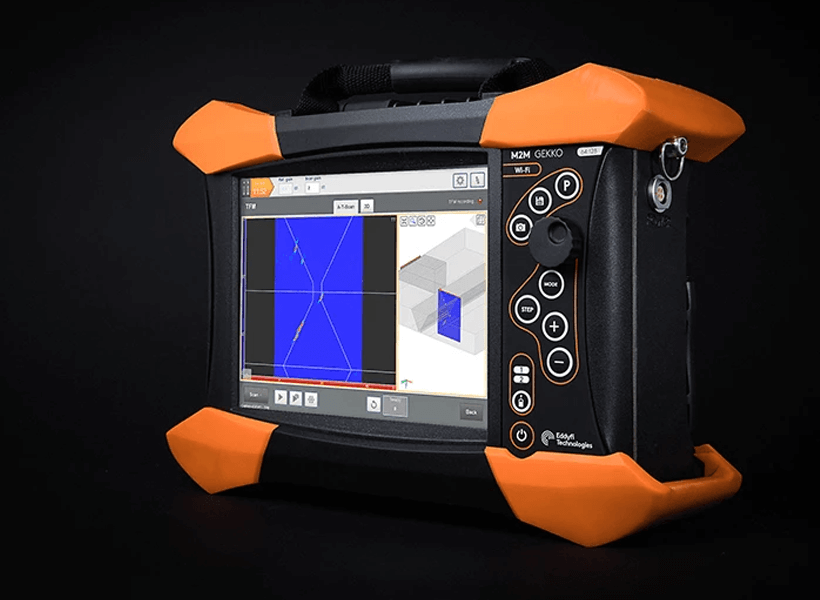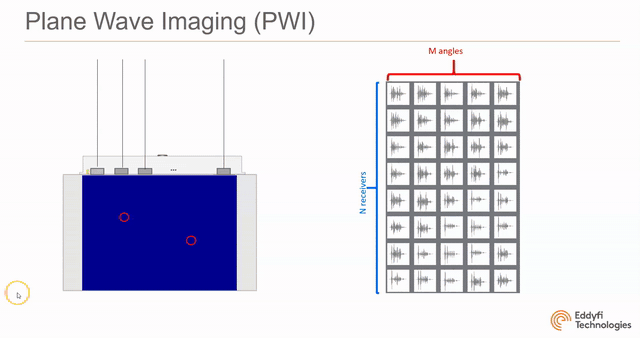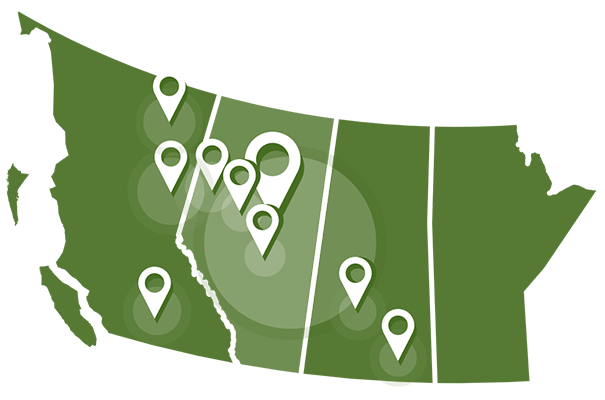NDT Inspection Technology: What’s New and Leading-Edge in 2020
NDT inspection technology, including training and tools, is continuously evolving.
With changes in government regulations, innovations in technology and the ever-changing needs of industries requiring surface and subsurface analysis, non-destructive testing continues to evolve to ensure the safety, productivity, and integrity of materials, products, and structures.
Interested in knowing more about what’s new and leading-edge in non-destructive testing (NDT)? This article will cover:
Why NDT is important
The advantages of NDT
What’s new in NDT training
What’s new in NDT technology
Pipeline inspection improvements
Why NDT is important
Non-destructive testing is vital for the timely detection of faults in products, materials, and equipment. If left undetected, defects and flaws can result in expensive and premature repairs or replacements. Unplanned shutdowns and failures can also result and have devastating health, safety, and economic impacts.
For pipelines, oil and gas, mining, lifting and industrial construction equipment, and tubing, NDT functions as quality assurance, ensuring the reliability and expected lifetime of equipment and materials is upheld.
Regular testing allows engineers to determine the current lifecycle stage of an asset and to proactively plan maintenance, repairs, or replacements. Regular inspections also ensure that catastrophic failures of your business/operational assets do not occur, potentially resulting in lengthy and costly downtime. Besides, routine testing ensures adherence to government regulations and standards, as well as the health and safety of your workforce and the environment.
Overall, NDT:
- Prevents accidents
- Reduces repair and replacement costs
- Improves reliability of assets
- Ensures adherence to regulations and policies
What are the advantages of NDT?
Non-destructive testing is ideal because it allows for the inspection of equipment, materials, and structures without the need to worry about downtime or damage.
NDT can save time and money by identifying problems early – before expensive repairs or replacements are needed.
What’s new in non-destructive testing
Advancements in technology and changes to government regulations and policies are continuously driving innovation in non-destructive testing. These changes affect all aspects of NDT, including training, inspection, and technology. The result – new and innovative methods and strategies.
NDT has come a long way since its origins. Simple VT has now evolved with the digital world, resulting in digital outputs, including 3D imaging and cloud connectivity that allows for remote testing and analysis.
NDT Training
NDT inspection technology and its applications are continuously improving and evolving. Inspection technology, equipment, and the services offered by inspection providers are ever-changing, including advancements in training and techniques.
Buffalo Inspection Services, for instance, recently implemented a Personal Certification in Non-Destructive Testing (PCN) course using Gekko and Mantis technology. This training is revolutionary, making Buffalo the first NDT company in North America to host PCN Certification on Gekko PAUT technology and the only non-union NDT inspection services provider in Western Canada with qualified PCN technicians.
NDT Inspection Technology
Advancements in technology drive change in non-destructive testing. As a result, hardware and software enhancements are continuously developed to improve testing and analysis.
Below are some of the most recent advancements that have been made in NDT technology:
The GEKKO
The M2M Gekko is one of the most advanced and reliable options for Total Focusing Method (TFM) testing. The only unit that supports a 3-axis encoder for TFM, the Gekko is also the first system able to produce matrix arrays and perform TFM in real-time.
As the most versatile and advanced PAUT field unit, the Gekko can cover a wide range of inspections, and, recently, a new generation of the Gekko was released, with various ground-breaking advancements introduced.
Improvements to the new generation of the Gekko include:
- Hardware – increased speed and channel sensitivity, longer battery life (up to 6 hours), improved touchscreen functionality (e.g. touchscreen can be used with gloves)
- Data management – new USB 3.0 connector for rapid file transfer and wireless data or screen sharing, IP68 LEMO encoder connector for compatibility with most scanners
- Software – the release of new Capture 3.1 software
Capture 3.1 software
The release of Capture 3.1 has brought many improvements to ergonomy, analysis, and TFM tools and options. The new advanced analysis tools offered by Capture 3.1 improve productivity and increase the quality of research and reporting, resulting in more efficient and reliable testing.
The new tools added to Capture 3.1 include:
- Auto-sizing – for a quick analysis of whether an indication is critical
- C-scan stitching – for inspections that require more than one file
- Full 3D exporting
- Improved indicators
TFM
The Total Focusing Method has come a long way since its inception. In 2013, portable TMF revolutionized non-destructive testing. Since then, TMF has seen significant changes to scan speed, the number of TFM options available on the market, and to code. These advancements have allowed TMF to remain one of the best and most reliable techniques for NDT.
- TMF options on the market
2013 – 1 TFM option
2020 – more than 10 TFM options
- Scan speed
2013 – ¼ inch per second
2020 – more than 4 inches per second
- Code
2013 – No TFM code
2020 – Code-compliant
Along with the recent release of Capture 3.1 software, a new TFM method called Plane Wave Imaging (PWI) has also been introduced.
Plane Wave Imaging
PWI, introduced by Eddyfi Technologies, is a new data acquisition technique for TFM. This technique is conducted by first firing all the elements of the array concurrently on several different angles, with elementary signals received on all of the elements. After this initial process, a typical TFM is performed. The final result is a matrix containing M x N (number of angles x number of elements) elementary A-scans.
The advantages of this new method include:
- Improved productivity – PWI is able to maintain the spatial resolution offered by other TFM methods (e.g. FMC) while increasing scanning speed.
- Increased sensitivity – depending on the number of angles used, PWI can offer an increase in sensitivity, resulting in the detection of smaller indications.
Pipeline inspection improvements
These new and leading-edge advancements in NDT allow for regular, comprehensive, accurate, and economical testing. The efficient and effective testing provided by a combination of this state-of-the-art technology ensures the safety and utility of large pipelines like the Transmountain.
Combining PAUT / TOFD and conventional UT with advancements like TFM, the Gekko is particularly useful for pipeline inspection in Alberta.
Radiography (x-ray inspection) and UT are commonly used; however, Phased Array Ultrasonic Testing (PAUT) offers several advantages for pipeline inspection. These advantages include NO:
- Radiation
- Risk
- Additional licensing necessary
With the ability to detect manufacturing flaws, corrosion, cracking, erosion, parent metal flaws, and more in pipelines, all while in-service, regular non-destructive testing ensures cost efficiency, environmental and public safety, and reliable, long-term performance.
Want to discuss NDT pipeline inspection for your company? Contact Buffalo today.





